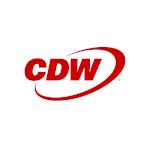We can see this pipeline in Newport News, Va. The Newport News Shipbuilding’s Career Pathways Program partners with local public schools in Virginia to give students exposure to relevant STEM careers. Some students can start a career in building, welding or electrical work with Huntington Ingalls Industries — the largest military shipbuilding company in the U.S., of which Newport News Shipbuilding is a division — right out of high school.
Other schools are integrating their CTE programs, like Portsmouth Public Schools, which is building the Portsmouth Advanced Career Education Center. This facility will offer state-of-the-art training opportunities in a variety of fields, including IT.
The PACE Center has planned esports and cybersecurity rooms, as well as hands-on network infrastructure learning experiences built into the walls. Students and staff will have passageways behind the walls that give them a firsthand chance to see and interact with the building’s infrastructure.
Digital Citizenship’s Role in Students’ Futures
Beyond the hands-on skills and certifications students can earn in these programs, schools can prepare students for the workforce with digital citizenship skills.
Digital citizenship depends on digital literacy, which is built through an understanding of digital vocabulary. Schools are teaching students digital fluency with these foundational building blocks as early as elementary school.
Then, by the time students are in middle and high school, they can begin to examine the context around digital citizenship and how they interact in digital spaces.
RELATED: What technologies can schools use to identify and prevent cyberbullying?
Learning these crucial skills not only molds students to become good colleagues one day, but also allows them to find and secure jobs. Learning to navigate social media appropriately is a key element of digital citizenship. This can improve their presence and familiarity with vital networking and job sites, like LinkedIn.
The Benefit of Partnerships for Building Career Pathways
Schools that don’t have these programs in place don’t have to start from scratch. Partners like CDW can help them figure out where to start. For example, CDW worked with Portsmouth Public Schools to conceptualize the spaces in its PACE Center.
There are also CDW experts dedicated specifically to program areas like esports to help schools build out esports arenas.
As an IT company, CDW not only is able to help schools partner with vendors for certification and trainings, but also is sometimes looking to fill these positions on its own staff.
Whether it’s a technology company like CDW or a local industry giant like Huntington Ingalls Industries, partnerships with organizations can serve a vital role for K–12 schools looking for ways to build students’ technical skill sets.







![[title]Connect IT: Bridging the Gap Between Education and Technology](http://www.edtechmagazine.com/k12/sites/default/files/articles/2014/05/connectit.jpg)




